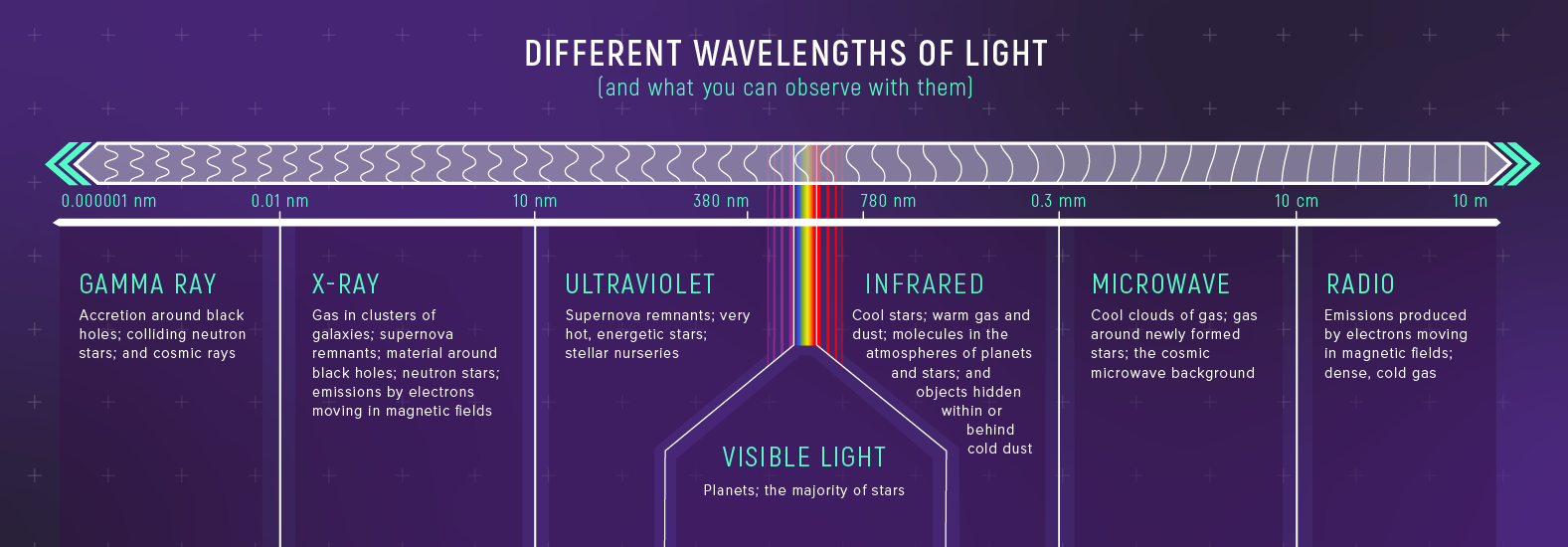1 min read
Spectroscopic Observations of Different Wavelengths of Light in Astronomy

Spectroscopy can be used to study interactions between matter and any form of light, from short-wavelength, high-energy gamma rays to long-wavelength low-energy radio waves. Because materials in space emit, absorb, transmit, and reflect different wavelengths in different ways, different types of spectroscopy provides different information.
For example: Gamma ray observations can be used to study accretion around black holes. X-ray observations are used to study gas in clusters of galaxies, material around a black hole, and neutron stars. UV observations are used for investigations of supernova remnants and very hot, energetic stars in stellar nurseries; visible light is used to study planets and the majority of stars; infrared light is used to see through cold dust; study warm gas and dust and cool stars, and detect molecules in the atmospheres of planets and stars. Microwave observations reveal information about cool clouds of gas, gas around newly formed stars, and the cosmic microwave background. Radio wave observations are used to study dense, cold gas, and emissions produced by electrons moving in magnetic fields.
Share
Details
Laura Betz
NASA’s Goddard Space Flight Center
Greenbelt, Maryland
laura.e.betz@nasa.gov
NASA, ESA, CSA, Leah Hustak (STScI)






























